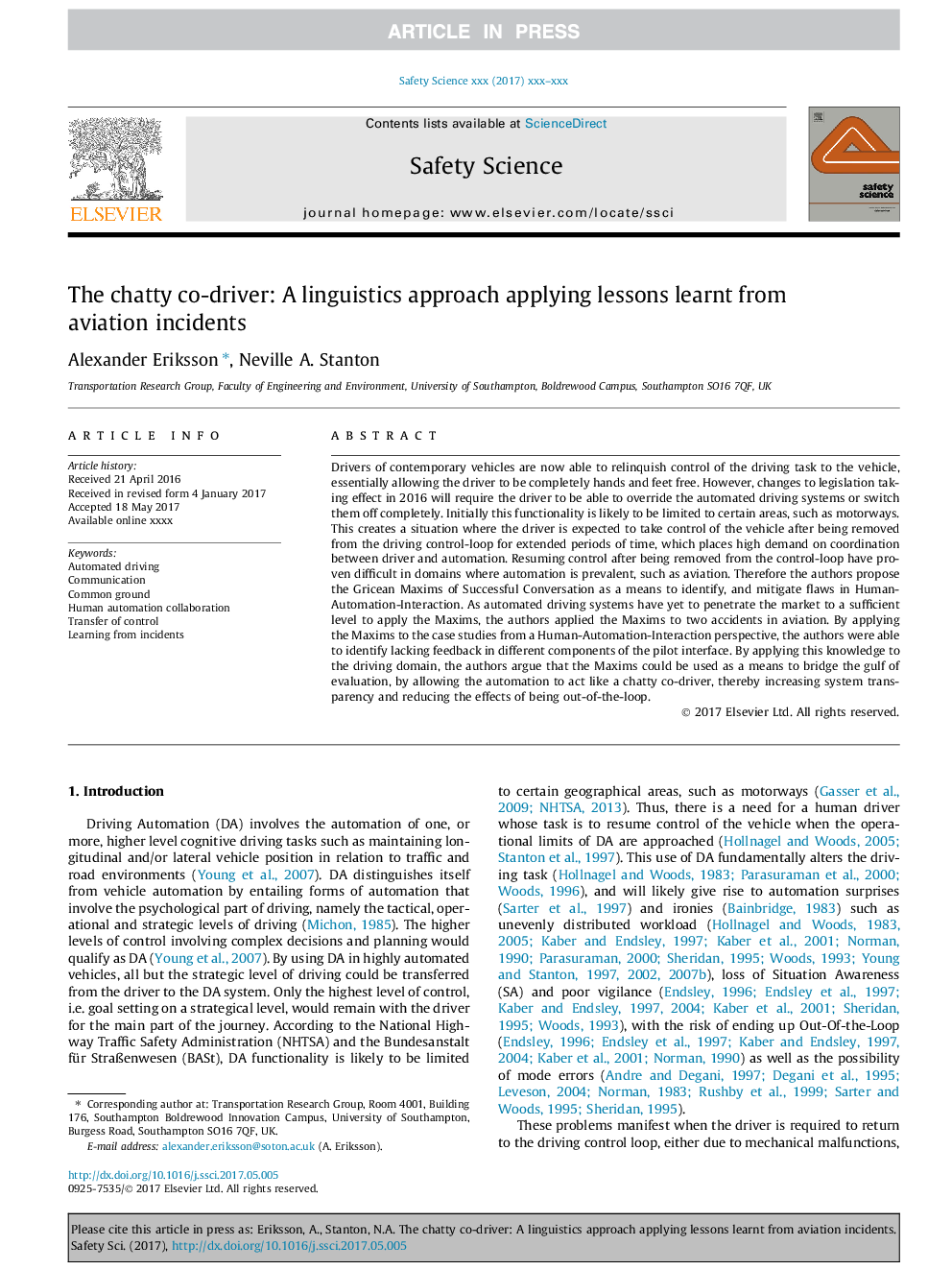| Article ID | Journal | Published Year | Pages | File Type |
|---|---|---|---|---|
| 4981157 | Safety Science | 2017 | 8 Pages |
Abstract
Drivers of contemporary vehicles are now able to relinquish control of the driving task to the vehicle, essentially allowing the driver to be completely hands and feet free. However, changes to legislation taking effect in 2016 will require the driver to be able to override the automated driving systems or switch them off completely. Initially this functionality is likely to be limited to certain areas, such as motorways. This creates a situation where the driver is expected to take control of the vehicle after being removed from the driving control-loop for extended periods of time, which places high demand on coordination between driver and automation. Resuming control after being removed from the control-loop have proven difficult in domains where automation is prevalent, such as aviation. Therefore the authors propose the Gricean Maxims of Successful Conversation as a means to identify, and mitigate flaws in Human-Automation-Interaction. As automated driving systems have yet to penetrate the market to a sufficient level to apply the Maxims, the authors applied the Maxims to two accidents in aviation. By applying the Maxims to the case studies from a Human-Automation-Interaction perspective, the authors were able to identify lacking feedback in different components of the pilot interface. By applying this knowledge to the driving domain, the authors argue that the Maxims could be used as a means to bridge the gulf of evaluation, by allowing the automation to act like a chatty co-driver, thereby increasing system transparency and reducing the effects of being out-of-the-loop.
Related Topics
Physical Sciences and Engineering
Chemical Engineering
Chemical Health and Safety
Authors
Alexander Eriksson, Neville A. Stanton,
